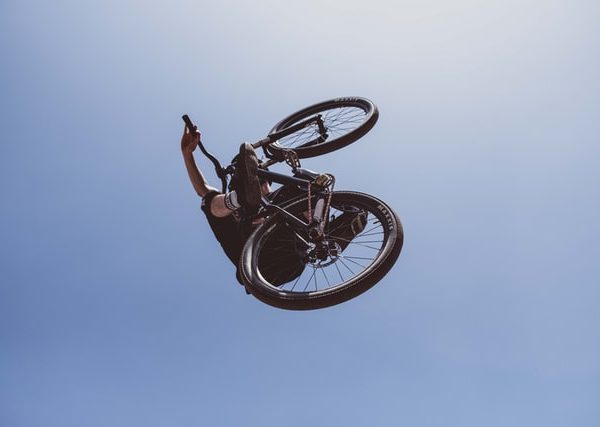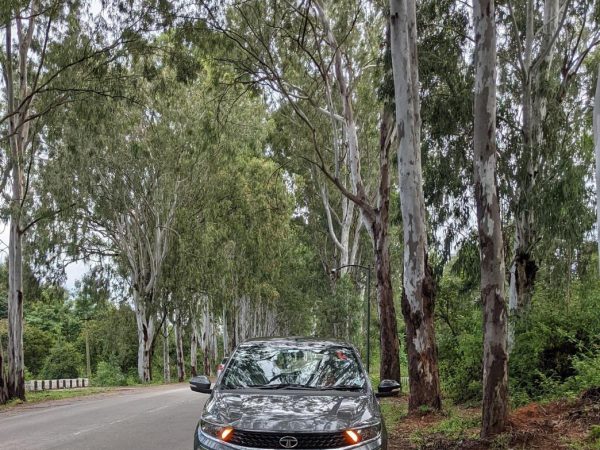How to improve your mountain bike. – bikerbuys.com
Table of Contents
- First improvement: the wheels
- The importance of tires
- What is the TPI?
- Tube less or not to tube less:
- Other components to invest in:
- Invest in comfort: the saddle
- Change power:
- A wider handlebar:
- The fists:
- Change the conventional seat post for a telescopic one:
- Conclusions:
When we buy a bicycle we want it to last a long time with us. One of the main keys to a good purchase is to find a bicycle with the best frame that we can afford.
And it is that sometimes we blind ourselves with the components that it comes standard, ignoring both the quality of the frame and whether its geometry is the one that best suits us.
The components are temporary and it will always be cheaper to improve them little by little, either because of wear or because we want to progressively upgrade based on our savings, than to have to change the frame because we want a better one.
In this article I will show you some of the improvements that can be made to your mountain bike.
When we think about improving our mountain bike, we have to think about the goal we want to achieve. Depending on the type of improvement, we could classify them into four groups:

.Weight
.performance
.Comfort (Comfort)
.Esthetic
First improvement: the wheels
If we want to make a noticeable improvement on our bike, the first and most important place to looks are the wheels.
Losing weight on the wheels of your mountain bike (and especially in the outermost area) due to inertia will be where you most notice the change and where you get the best performance.
If we also change the material of the wheels and go to carbon, we will gain rigidity and we will get a much smoother and more stable ride.
The importance of tires
The weight of the tires, being in the outermost part of our wheel, will influence more than that of, for example, a hub and much more than that of a seat post.
An option to lower the weight on the outside of the wheel, and thus gain in performance, is to change our tires for lighter ones. However, this can have the counterpoint that they can crack or puncture more easily.
For this we will have to be very clear about which areas we usually roll, and if it is worth going to lighter tires or adding a little more weight and looking for a tire reinforced with some material that gives it more resistance or simply looking for a TPI lower.
What is the TPI?
The TPI number of a tire indicates the density of nylon threads in one square inch of the tire. In such a way that if it has a very low TPI, that means that it has more rubber and is heavier and, in principle, more resistant. On the contrary, high TPIs indicate that it is a lighter tire.
Tube less or not to tube less:
Without a doubt, tubing is the first improvement you should make to your mountain bike. It’s a cheap upgrade, you’re going to take weight off the wheel and get rid of a lot of puncture woes.
On the negative side, tubeless wheels require regular maintenance. Every 6 months we will have to take a look at the state of the liquid and, either we will have to fill the wheel a little or renew the liquid.
Other components to invest in:
Obviously, transmission elements such as the gearbox, the cassette, the chain ring or the cranks are the most recurrent investments when looking for a better performance of the bicycle.
However, there are others that often go unnoticed but that really are a way to improve your mountain bike. Some of them are listed below.
Invest in comfort: the saddle
If it is usually said that each person is a worlds with the asses even more so. There is no consensus on which is the ideal or the most comfortable saddle.
Our improvement in saddle can be focused on the weight, to avoid numbness problems in the noble parts (anti-prostate saddle) or to seek comfort with more or less padded saddles (although at this point the key will be more in a good culottes pad than not in a saddle with a cushion like a sofa).
Change power:
There are mountain bike manufacturers that manage to lower their prices by putting lower quality stems than the average of the bicycle, since a better or worse power is not usually the key point that makes you decide on one or another bicycle.
Here we would have a component where to get an improvement in two factors at a contained price:
- In weigh. For example, changing your stem from aluminum to a carbon one.
- In performance and comfort. If the geometry of your bike doesn’t suit you perfectly, by changing the stem you can play with different lengths and different angles until you find the one that best suits you.
If you are not sure which posture or stem length is ideal for you, we recommend a biomechanical study to avoid future injuries or to optimize your performance.
A wider handlebar:
As was the case with the stems, the handlebars are also an element that we can improve, reducing the weight of the series or even looking for wider handlebars that give us more security on the descents.
The fists:
Grips that match the color of the frame or try different materials such as foam or silicone can be other improvements in the search for comfort, grip and aesthetics.
Change the conventional seat post for a telescopic one:
Not everything has to be weight improvements. The dropper post can give you that extra comfort and safety on technical descents, adding enjoyment to your outings. For some cyclists the dropper post has become an essential accessories.
Conclusions:
If you are looking to buy a mountain bike, the best thing you can do is get one with a good frame. Then, as your needs arise (or whims, it must be recognized that sometimes we are a bit capricious) you will gradually change your bike to improve it.
If you have some money saved, the ideal is to start with good wheels. If not, don’t worry either, you can start with some nice grips or some pedals of a slightly higher range. Be one thing or another that we change, when we release it it will make us feel on the bicycle like a child with new shoes.









